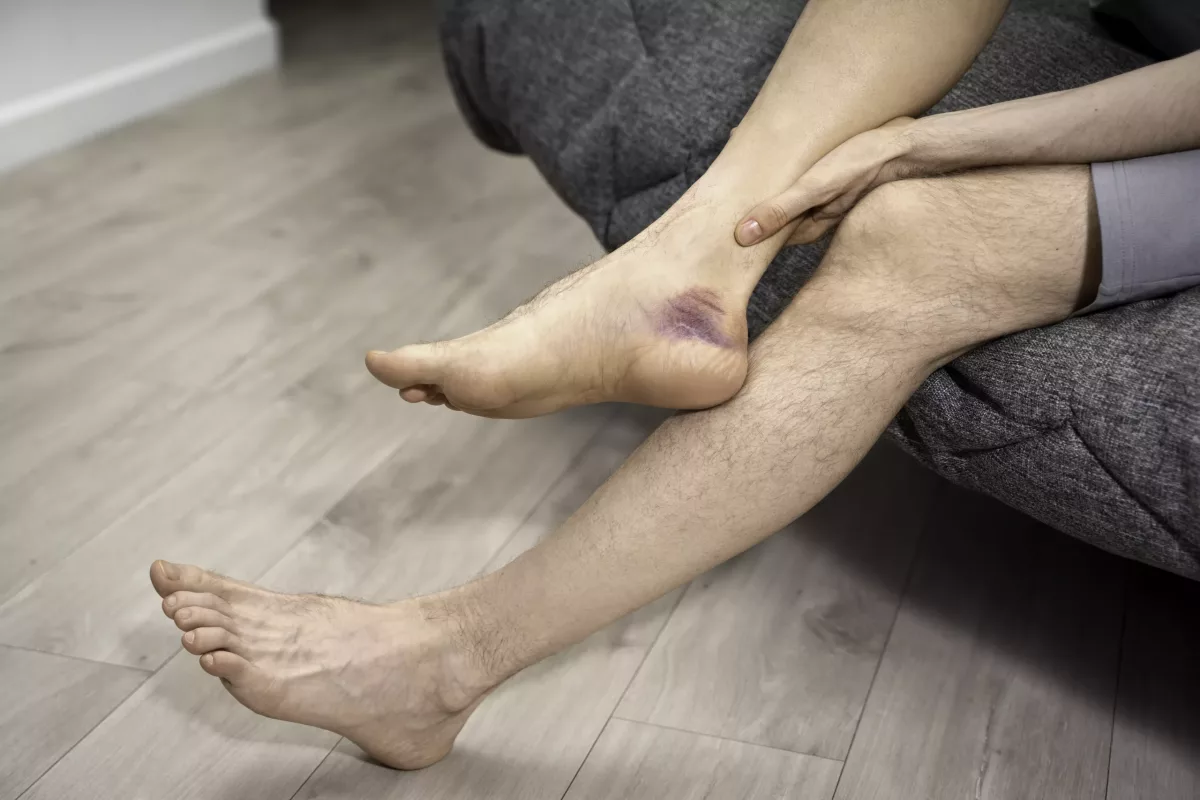An injury that happens when you roll, turn, or twist the ankle in an awkward position is called a sprained ankle. As a result, it may tear or stretch the ligaments (tough bands of tissue) that are responsible for holding the ankle bones together.
Furthermore, ligaments also help prevent excessive movement and stabilize joints. This condition often happens when the ligaments are forced more the normal range of motion. However, people usually damage the outer part of the ankle ligaments.
Treatment for people with a sprained ankle is often different because it depends on several factors. These include the severity of the condition, overall health, your age and preferences, and others. In mild cases, people need over-the-counter pain relievers and self-care measures.
Symptoms
The symptoms of this condition appear differently among people with a sprained ankle because it depends on the severity of the injury. Check below some examples:
- Bruising
- Swelling
- Tenderness of the ankle
- Reduced range of motion
- Instability
- Popping sound or sensation at the time of injury
- Pain
If you experience pain and swelling in the ankle and self-care measures do not help, you should see a doctor immediately. Go to the nearest emergency room or call 911 if you experience severe pain.
Causes
This condition usually occurs when the ligaments of the ankle are forced out of their normal position. It may cause the ankle’s ligaments to stretch or tear. Check below some causes of a sprained ankle:
- Falls that cause the ankle to twist
- Jumping or pivoting on the foot
- Exercising or walking on an uneven surface
- Another person who accidentally lands on or steps on your foot
Risk Factors
The following factors could increase your risk of developing a sprained ankle. Check some examples below:
- Sports – This condition is common among people who participate in sports that require cutting, rolling, twisting, or jumping. These include football, soccer, trail running, tennis, basketball, and others.
- Poor field or uneven surfaces – Running or walking on uneven surfaces significantly increases the risk of developing a sprained ankle.
- Ankle injuries – Some people experience a sprained ankle caused by an ankle injury.
- Poor physical condition – Those who have poor strength or flexibility in the ankles are at higher risk of developing this condition.
- Improper shoes – If you wear shoes that are not appropriate or do not fit properly, it may also lead to ankle injuries and sprained ankles.
What Are The Possible Complications of a Sprained Ankle?
People who develop a sprained ankle may also experience some complications. These include:
- Chronic ankle joint instability
- Long-term (chronic) ankle pain
- Arthritis
- Recurrent sprains of the ankle
How to Prevent a Sprained Ankle?
Check below some tips that may help avoid or reduce the risk of a sprained ankle:
- Warm up each time you exercise or play sports
- Carefully walk, run, or work, especially on poor fields or uneven surfaces
- Wear shoes that fit properly
- People who have had a sprained ankle should use ankle support tape or a brace
- Limit wearing high-heeled shoes
- You should not play sports or engage in activities if you are not conditioned for them.
- Exercise regularly to keep good muscle strength and flexibility
Diagnosis
First, doctors will perform a physical examination of the ankle, foot, and lower leg to check for abnormalities linked with the condition. In severe cases, doctors may recommend some tests to exclude a broken bone or get more clues about the condition. For example:
- X-ray – This is an imaging test used to rule out bone fractures.
- MRI (magnetic resonance imaging) – This test uses a strong magnetic field and radio waves to produce detailed images of the ankle.
- CT (computed tomography) – Doctors perform this test to get cross-sectional images of the ankle and nearby tissues.
- Ultrasound – This is a specific test that uses sound waves to make real-time pictures of the ankle. It helps confirm a sprained ankle.
Treatment
Doctors usually recommend different treatment options for people with sprained ankles. For example, self-care measures, medicines, therapies, or surgery. It depends on the severity of the condition.
Self-Care
Check below what involves self-care measures if you have a sprained ankle:
- Rest – It is recommended to avoid activities that cause swelling, pain, or discomfort for at least 3 days.
- Ice – You can use an ice pack or ice slush bath right away for 15 minutes. You should inform your doctor if you have the following conditions before applying the ice. For example, vascular disease, diabetes, or reduced sensations.
- Compression – It is recommended to use an elastic bandage to reduce swelling.
- Elevation – If you elevate your ankle above the level of the heart, it also may help reduce swelling.
Medicines
Almost everyone with a sprained ankle should take over-the-counter (OTC) pain relievers, including Ibuprofen, Naproxen sodium, or Acetaminophen.
Devices
Commonly, doctors recommend using crutches until the pain goes away. In severe cases, doctors may also recommend an ankle support brace, which helps stabilize the ankle.
Therapy
When the pain goes away, physicians usually recommend multiple exercises to restore the ankle’s strength, flexibility, stability, and range of motion. Furthermore, stability and balance training are very important to maintain the muscles of the ankle healthy and support joints. It also helps prevent recurrent sprains.
Surgery
This treatment is often recommended by doctors when physical therapy and rehabilitation do not work. During this procedure, surgeons will repair the affected ligament and reconstruct nearby tissues.
Frequently Asked Questions
What is the best way to treat an ankle sprain?
Most people notice improvements with Rest, Ice, Compression, and Elevation. It is usually recommended for people with mild to moderate sprains to reduce pain and promote healing.
How long does it take for a sprained ankle to heal?
People usually recover from this condition differently, between a few weeks to months. It depends on the severity of the ankle injury.
What can be mistaken for a sprained ankle?
In some cases, an ankle strain can be mistaken for a sprained ankle. It is a very similar condition but involves damage to the muscles and tendons instead of the ligaments of the ankle. Ask your healthcare professional if you have additional questions.




